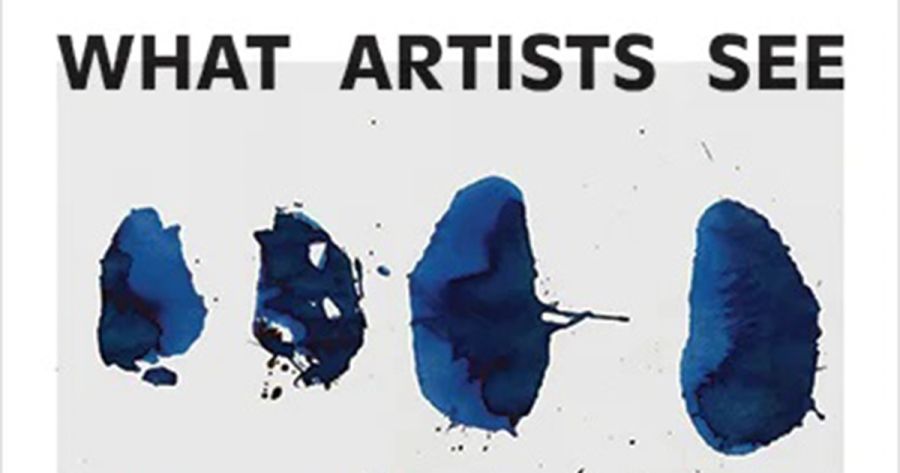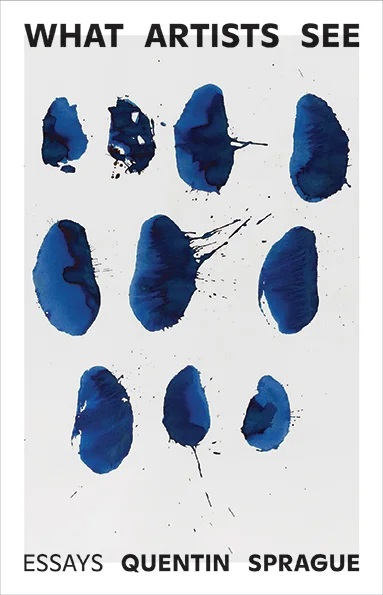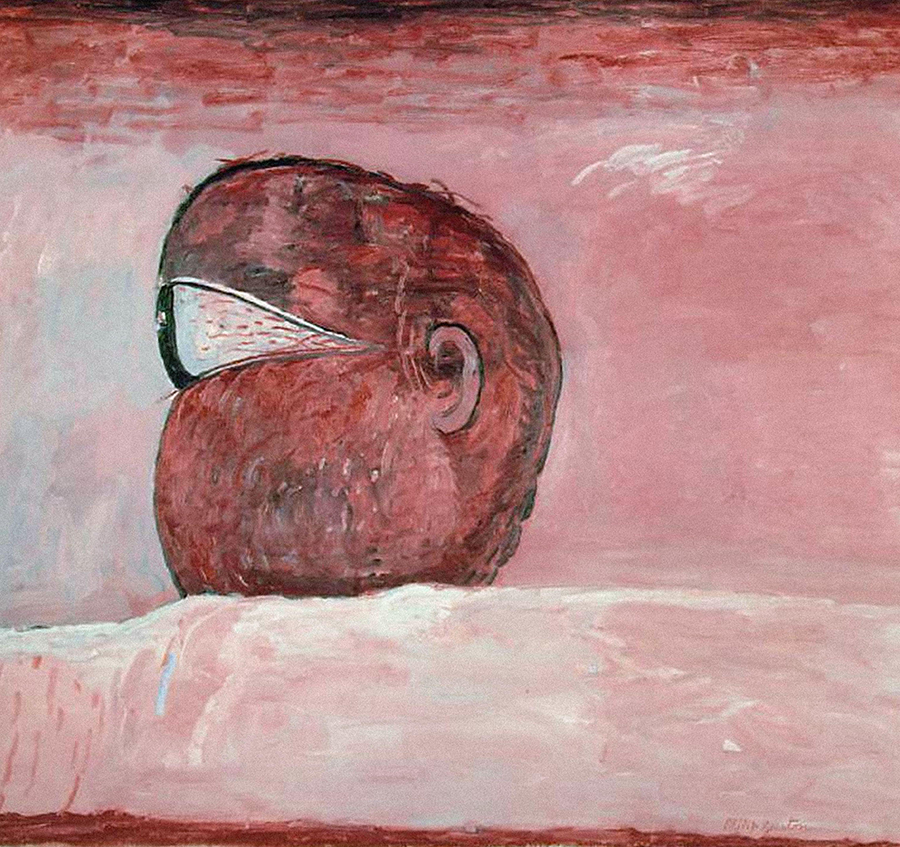
- Free Article: No
- Contents Category: Essay Collection
- Review Article: Yes
- Article Title: Eye wide open
- Article Subtitle: Strange power of images
- Online Only: No
- Custom Highlight Text:
I came to this book with a question: how will the author select the dozen or so artists upon whom he focuses? Of all the artists in Australia and beyond, why these few? One answer is pragmatic: What Artists See is based, in part, on previously published essays, several from The Monthly, others in exhibition catalogues. Sprague’s book might be understood, then, as an assemblage of previously dispersed parts, a drawing together of discrete pieces under one title. But it is also far more than this.
- Book 1 Title: What Artists See
- Book 1 Subtitle: Essays
- Book 1 Biblio: Monash University Publishing, $29.99 pb, 288 pp
- Book 1 Cover Small (400 x 600):

- Book 1 Cover (800 x 1200):

- Book 1 Readings Link: https://www.readings.com.au/product/9781923192379/what-artists-see--quentin-sprague--2025--9781923192379#rac:jokjjzr6ly9m
My question – who gets attended to, who gets left out – is partly personal. Like Sprague, I once had my ‘own nascent art practice’ which I gave away decades ago and many of my oldest friends are artists. Of these artists, some have achieved market success and live from their work, some straddle the often competing worlds of academia and art making each with their very different demands, and still others have maintained a practice for decades with either intermittent acclaim or very little recognition or remuneration at all. And yet the latter have continued to make their work, often under difficult circumstances – the ‘significant financial and emotional insecurities’ of maintaining an art practice, as Sprague puts it.
Sprague comes at this question – what holds the art writer’s attention – in the most personal, intimate, and invigorating of ways: through recollection of viewing art as a child. He describes driving at sunrise from the rural Monaro region to ‘the city’ of Canberra, a city in name only in the 1980s, to visit the National Gallery of Australia. Here he encountered twentieth-century American art – Warhol, Pollock, de Kooning, Frankenthaler, Rothko, and most especially Philip Guston. It is Guston’s Pit (1976) and Bad Habits (1970), as well as the architectural space of the gallery itself that grabbed hold of Sprague, permeated his young consciousness, and never let go.
Sprague’s formative encounter with Guston’s work serves as both prelude and coda to the book. He seizes on the figure in The Pit, lying in a ragged hole, covered in a jumble of nailed boots and stalk-like, truncated shins. It is one of Guston’s starker images, the palette of reds, oranges, and blacks far more relentless and claustrophobic than Bad Habits with its signature hooded figures and spare, lyrical passages. But it is The Pit’s figure with a ‘bulbous head’ and a single, large wide open eye staring downward, almost imprinting against the earth within which it is entombed, that gives the book its central motif. As a child, Sprague was captivated by Guston’s image of emotional torment. As an adult, he sees it anew: not as an image of despair, ‘but rather an image of the artist at work, feeling their way forward; looking, always looking … [eye] wide open, letting the world flood in’.
 Head by Philip Guston (Artepics/Alamy)
Head by Philip Guston (Artepics/Alamy)
The idea of looking ‘undertaken with a kind of concentrated attention and care’ connects the essays. The artist’s process of reaching, holding, and reaching again, varies from practice to practice, says Sprague, but the process shares ‘the interlinked acts of looking and seeing’ and an ‘insatiable curiosity for images and the strange power they can enact’. And so, we encounter a diverse collection of practitioners including Stuart Ringholt, Simryn Gill, a printmaking collaboration between Mike Parr and printer John Loane, Ken Whisson, Mirdidingkingathi Juwarnda better known as Sally Gabori, Vivienne Binns, painters Sydney Ball and Lynne Eastaway and their Glenn Murcott house, Helen Maudsley, Brent Harris, Karl Wiebke, Katharina Grosse, cultural theorist and memoirist Eric Michaels, and Benjamin Armstrong.
What Artists See is an act of honouring, listening, and ‘writing with’ these artists, through interviews, studio visits, dialogue, and conversation. The essays layer biographical insights, glimpses into practice – the hands-on making of work and the ideas, compulsions, and obsessions that feed that making – and how particular bodies of work have evolved over time, in some instances right to the last days of an artist’s life.
The book is full of indelible moments: Simryn Gill strolling the foreshore under the shadow of a power plant built alongside her childhood home, her refusal of the biographical frame and its simple cause-and-effect thinking about influences, her insistence on the unbeautiful as much as the beautiful. It is from the inchoate urge, the unbeautiful, that new things grow, she suggests. Sprague takes us to Ken Whisson, living alone in his nineties in a spartan two-bedroom flat in Sydney, producing a small painting of cars not long before his death. We glimpse the dark atmosphere of Brent Harris’s childhood, his father looming, charged with imminent violence, and see Harris’s refusal to allow these difficult early years to calcify into a life he didn’t want, plumbing them instead to open onto ‘moments of aesthetic and psychological revelation’. We hear of Helen Maudsley’s practice as it evolved alongside husband John Brack’s much-celebrated career, her own work barely known and yet sustained with a fierce, unrelenting determination, insisting on a kind of opacity in her imagery.
There are also poignant moments of silence. Sprague visits the aged Mrs Gabori on Mornington Island, hoping to interview her. Instead, he sits at an impromptu family gathering, the moments when he might converse slipping away. Mrs Gabori speaks limited English, says little anyhow. At last, one of her daughters steps forward, speaks. ‘We are very thankful for what Mum has done for us,’ she says. Sprague’s discussion of Gabori’s work complements his previous award-winning book, The Stranger Artist (2020), with its excavation and animation of the Aboriginal art movement. Her story, too, reveals the white desires and expectations of Aboriginal art, with their deep colonial roots and ‘extractive urge’ forming an integral part of its production.
We revere the figure of the artist says the book’s blurb. But we also live in a culture that can be disparaging of art. What Artists See writes against art’s trivialisation. It returns again and again to the central motif of the eye wide open. There is looking as bearing witness – as ‘granting attention to what might otherwise go unseen’ – looking as feeling, as searching, as a means to concentrate a whole life. Sprague also evokes the figure of the writer-viewer looking at themselves looking, the self-reflexive act of feeling one’s way through art. He explores the idea of ‘dumb’ art, not dumb as in unintelligent but dumb as in mute but nevertheless able to communicate. His writing expands and interleaves with acts of mysterious, dumb communication. It is grounded, as it were, in each artist under discussion, tethered there, and yet also able at moments to fly free and become something other: to relate, beautifully, his own childhood memories of the Monaro landscape, wind ‘announcing itself’ across rolling hills ‘as a shimmer in the tussocks’; to recollect picking blackberries in the rain in the final, quirky chapter framed as a letter to Benjamin Armstrong; to recall viewing art as a child in all its rawness before learning a framing language, art history, or biographical knowledge of artists and how they fit in the art world with its categories, hierarchies, means of favouring, elevating, ignoring, discarding. What Artists See is compelled by the ‘strange power’ of images, which, in turn, is summoned in the reader’s own imagination.


Comments powered by CComment